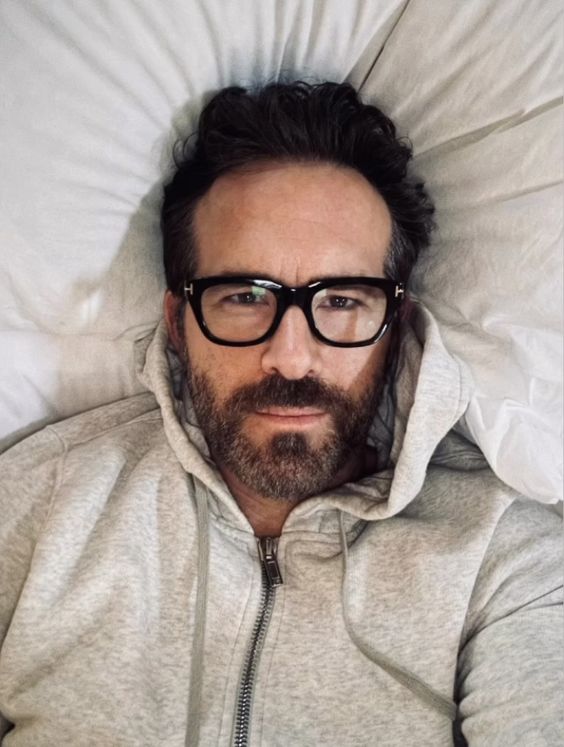
Ryan Reynolds, the charismatic and beloved actor recognized for his roles in “Deadpool,” “The Proposal,” and “Green Lantern,” has an intriguing and deeply personal story that many fans may not be aware of: his profound fear of flying. This phobia stems from a harrowing experience during a skydiving adventure that left a lasting impact on his psyche and has shaped his relationship with air travel ever since.
The Incident
Reynolds’ fear of flying can be traced back to a single, terrifying moment that would haunt him for years to come. During a recreational skydiving trip, the actor faced a life-threatening situation when his parachute failed to open on the first attempt. The sheer panic of plummeting towards the earth combined with the gut-wrenching uncertainty during those moments of free fall had a profound psychological impact on him. When the parachute finally deployed, the relief was immense, but the experience had already etched an indelible mark on his consciousness. This brief yet intense episode was a catalyst for his subsequent aversion to flying.
Impact on His Career
Despite this intense fear, Reynolds has remarkably not allowed it to hinder his flourishing acting career. In an industry where constant travel is essential for filming, promotions, and personal engagements, Reynolds has had to confront his fear repeatedly. The nature of his profession demands frequent flights, which for him, are a blend of necessity and personal challenge. His ability to maintain a successful career while managing this fear is a testament to his resilience and determination.
Reynolds’ openness about his fear has also contributed to his relatability, making him a figure that many fans feel they can connect with on a personal level. His willingness to share such vulnerabilities offers a glimpse into the human side of a global superstar often seen as invincible.
Coping Mechanisms
Over the years, Reynolds has developed and refined several strategies to manage his fear of flying. These coping mechanisms include:
- Preparation and Education: One of the ways Reynolds confronts his fear is through preparation and education. By understanding the safety measures, procedures, and statistical realities of air travel, he attempts to rationalize his fear. Knowing that air travel is one of the safest modes of transportation helps him mitigate anxiety, although the emotional response often defies logical reasoning.
- Professional Help: Reynolds has sought professional help to address his anxiety related to flying. Therapy and counseling have played a significant role in helping him manage the panic and stress associated with boarding an airplane. Techniques such as cognitive-behavioral therapy (CBT) have been instrumental in reframing his thought processes and reducing the intensity of his fear.
- Distraction Techniques: Distraction is another key tool in Reynolds’ arsenal. By keeping himself occupied during flights, he can divert his mind from the anxiety-inducing aspects of flying. Engaging in activities such as reading, watching movies, or even using humor to lighten the situation helps him stay distracted. His quick wit and comedic talent, often shared on social media, reveal how he uses humor as a coping mechanism.
- Breathing Exercises and Meditation: To combat the physical symptoms of anxiety, Reynolds practices breathing exercises and meditation. These techniques help calm his nervous system and bring a sense of control during flights. Mindfulness and focused breathing can significantly reduce the physiological responses associated with fear and panic.
Public Perception and Advocacy
Ryan Reynolds’ candidness about his fear of flying has had a significant impact on public perception. His transparency not only makes him more relatable but also provides comfort and inspiration to many who struggle with similar phobias. In discussing his experiences openly, Reynolds has helped destigmatize anxiety disorders and has encouraged others to seek help and support.
Moreover, his advocacy for mental health extends beyond his personal experiences. Reynolds has been vocal about the importance of addressing mental health issues and has used his platform to promote awareness. By sharing his journey, he emphasizes that seeking help is a sign of strength, not weakness, and that managing anxiety is a continuous process that requires support and understanding.
Conclusion
Ryan Reynolds’ fear of flying, originating from a near-tragic skydiving incident, is a profound reminder of his human vulnerability, contrasting with the invincible characters he often portrays on screen. His journey of confronting and managing this fear highlights his bravery and offers valuable lessons on overcoming personal challenges.
Despite the significant impact of this phobia, Reynolds’ career remains a testament to his resilience. His ability to continue thriving in an industry that demands frequent travel showcases his determination and strength. Through his openness, he has inspired many to face their fears head-on and to seek the necessary help to lead fulfilling lives.
Reynolds’ story serves as a beacon of hope for those grappling with similar fears, illustrating that it is possible to manage and even overcome such challenges. His experiences remind us that behind the glitz and glamour of Hollywood, there are real people with real struggles, and that vulnerability is an intrinsic part of the human experience.
In a world where mental health is gaining increasing attention, Ryan Reynolds stands as a powerful advocate, using his platform to encourage dialogue, promote understanding, and inspire change. His journey from a terrifying skydiving incident to managing his fear of flying is not just a story of personal triumph, but a broader narrative of courage, resilience, and the ongoing quest for mental well-being.